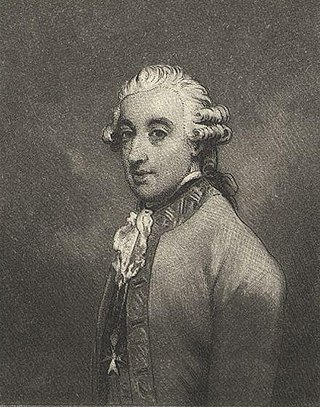Ludovico Barbiano di Belgiojoso (also spelled Lodovico, Belgioioso) may refer to:

Ludovico Maria Sforza, also known as Ludovico il Moro, and called the "arbiter of Italy" by historian Francesco Guicciardini, was an Italian nobleman who ruled as the Duke of Milan from 1494 to 1499.

Belgioioso or Belgiojoso is a town and comune in the Province of Pavia, region of Lombardy, with a population of 6,233 (2017).

Alberico da Barbiano was the first of the Italian condottieri. His master in military matters was the English mercenary John Hawkwood, known in Italy as Giovanni Acuto. Alberico's compagnia fought under the banner of Saint George, as the compagnia San Giorgio.
Barbiano may refer to:
Confienza is a comune (municipality) in the Province of Pavia in the Italian region Lombardy, located about 50 km southwest of Milan and about 50 km northwest of Pavia.
Ludovico is an Italian masculine given name. It is sometimes spelled Lodovico. The feminine equivalent is Ludovica.
Lodovico is an Italian masculine given name, and may refer to:
Belgioioso or Belgiojoso may refer to:

Cristina Trivulzio di Belgiojoso was an Italian noblewoman, the princess of Belgiojoso, who played a prominent part in Italy's struggle for independence. She is also notable as a writer and journalist.

The Villa Belgiojoso Bonaparte, also known as Villa Reale and formerly called Villa Comunale, is a palace in Milan, in Lombardy in northern Italy. It was built between 1790 and 1796 as the residence of Count Ludovico Barbiano di Belgiojoso. The villa is in Neoclassical style, and was designed by Leopoldo Pollack. The main entrance is on via Palestro, facing the Giardini Pubblici of Porta Venezia, the eastern gate of the city.

The Palazzo Belgioioso is a palatial residence in the northern Italian city of Milan, completed in 1781 in a Neoclassical style by Giuseppe Piermarini.

Ludovico Luigi Carlo Maria di Barbiano di Belgiojoso or Ludwig Karl Maria von Barbiano Graf von Belgiojoso was an Austrian diplomat and Lieutenant Field Marshal who served the Habsburg monarchy in the second half of the 18th century.

Franca Helg was an Italian designer and architect. She also had a career teaching at Istituto Universitario Architettura Venezia and Polytechnic of Milan. She collaborated with Franco Albini from 1945 through 1977.

Vespasiano Colonna was an Italian nobleman and condottiero, a member of the Colonna family.

Giovan Giacomo Barbiano di Belgioioso or Belgiojoso (1565–1626) was an Italian commander in Habsburg service in the Low Countries and the Kingdom of Hungary.
Giovanni Barbiano di Belgiojoso was an Italian nobleman and soldier.

Villa Pliniana is a villa originally built in 1573, on the site of a more modest pre-existing building, in the territory of the municipality of Torno, in the province of Como, on the right bank of the western branch of Lake Como.
Ludovico Barbiano di Belgiojoso (1488–1530) was an Italian military leader who fought on both sides during the Italian Wars.
The sack of Pavia took place in 1527 during the War of the League of Cognac. The city was defended on behalf of the Emperor Charles V by Count Ludovico Barbiano di Belgiojoso. He had 2,000 native Italian infantry, 30 men-at-arms and 100 light horse under his command. The city walls had not been repaired since the battle of Pavia in 1525.

The Barbiano di Belgioioso have been a noble family of northern Italy since the late Middle Ages.